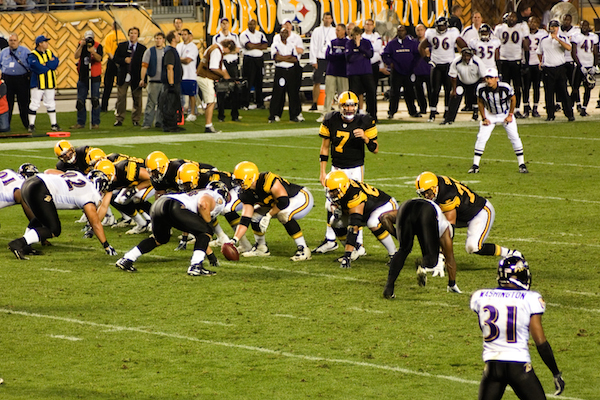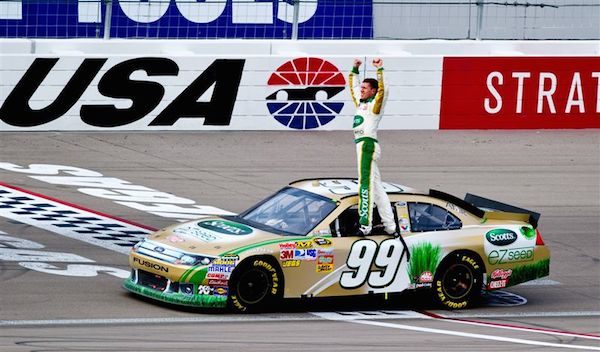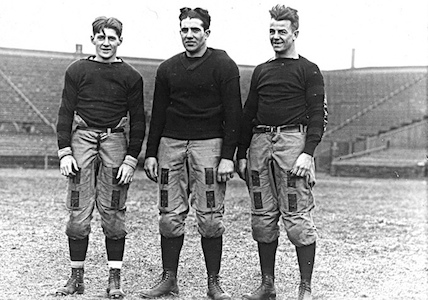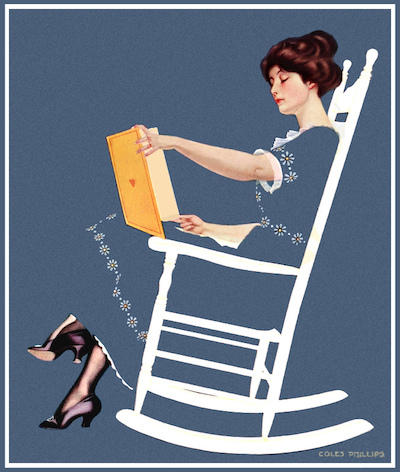Dear Sports Fan,
Why does an offensive lineman slap the center’s butt in football? I see this all the time now when watching football and I never used to. What changed?
Thanks,
Melvin
Dear Melvin,
The offensive lineman next to the center, called a guard, slaps the center’s butt as part of the elaborate set of signals a team uses to coordinate the snap that starts a football play. The snap has been an evolving practice with league-wide trends and team specific wrinkles. The guard’s slapping of the center’s butt is the latest in a long line of innovations aimed at giving the offense a slight advantage against the defense. Here’s how it works and some of the history behind it.
In the old days, offenses in competitive football used basically the same system we all used when playing football in our backyards as kids. When the quarterback says “hike” the center snaps the ball to him and the rest of the offensive team begins to block or run routes as programmed by the play. As you might expect though, defenses caught on to the meaning of the word “hike” and charged at the quarterback as soon as he said it. So, teams went to great lengths to disguise their signal to snap the ball. They might use different words or alter the number of times the quarterback could say a word before it told the offense the play was starting. Soon though, the popularity of college and professional football, new stadium designs that seemed amplify noise, and the increasingly intentional involvement of screaming fans meant that offenses on the road simply couldn’t hear the quarterback. Offenses had to adjust to the noise and do so while maintaining the advantage of being in sole possession of knowing exactly when the ball is going to get snapped.
There is a simply wonderful article about how offenses adjusted and evolved to this challenge called, The Silent Treatment, by Mark Bowden in Sports Illustrated. I had absolutely no idea, but there was a time when the NFL actually had a rule which said that if the crowd was too noisy, the quarterback did not have to snap the ball. The ref would ask the crowd to quiet down and if they did not, the home team would be penalized. This seems totally crazy nowadays when we expect the home crowd’s noise to be an advantage for the home team by making it impossible for the visiting offense to hear each other. The rule was struck from the books in the early 1980s and from that moment, the defense had a big advantage at home. Offensive coaches had to adjust and finally, one of them did. Bowden tells the story of that adjustment through its integral figure, the former NFL guard and long-time offensive line coach, Howard Mudd. Mudd was thinking about the problem of coordinating offenses without being able to hear when he talked to a fellow coach who had spent some time coaching football at a school for the deaf. If they could do it, he figured NFL athletes could do it to. He implemented a system called the “silent count.” In this system, the quarterback would give some visual signal to the center (who is looking backwards through his legs.) That would cue the center to raise his head or wiggle it side to side. This visual cue would tell the rest of the offensive line to begin counting: one one thousand, two one thousand, three… and at a pre-set number of thousands or Mississippis, the center would snap the ball to the quarterback while the rest of the team simultaneously began their movements. Mudd’s team, the Indianapolis Colts who had a young Peyton Manning and a great left tackle, Tarik Glenn, adopted Mudd’s silent count so effectively that it became a weapon for them:
The Colts got good at it. Glenn got very good at it. He learned to coordinate the count with the swivel of his head. It was like a dance move. “It made a huge difference,” he says. “It gave me time to face the task at hand. It’s all about timing, and pretty quick I could just feel it.” In fact Glenn started getting off the snap so fast that refs flagged him, claiming he had jumped too early. Mudd defended him. “He would send a man to the league office and have them review it,” says Glenn. “After a while they started to see that I wasn’t offside. Coach Howard didn’t just come up with the silent count, he sold it, to the team and then to the league.”
Like any good innovation, the silent count was soon adopted and altered by teams around the league. According to the Wall Street Journal, the New York Giants tackle Luke Pettigout, “used to like to hold onto Mr. Seubert’s [the guard between him and the center] pinky. He didn’t want to take his eyes off the man he had to defend. When Mr. Seubert saw the ball snapped, he’d free his hand and Mr. Pettigout could go.” The New York Jets, according to NJ.com, are one of the teams who use the innovation you mentioned in your question — the guard hitting the center’s butt: “The center has such an important pre-snap job – identifying the linemen’s attack point for blocking on running plays – that some offensive coordinators don’t want the center to take his eyes off the defensive front. So those coordinators will have one guard look back through his legs for the quarterback’s leg lift. When the guard sees it, he will tap the center, who then begins his head nodding.” So that’s the answer to your question. When the guard hits the center’s butt, he’s relaying a signal from the quarterback to the center to ask him to begin a silent count that will lead to the ball being snapped.
Thanks for the question,
Ezra Fischer








